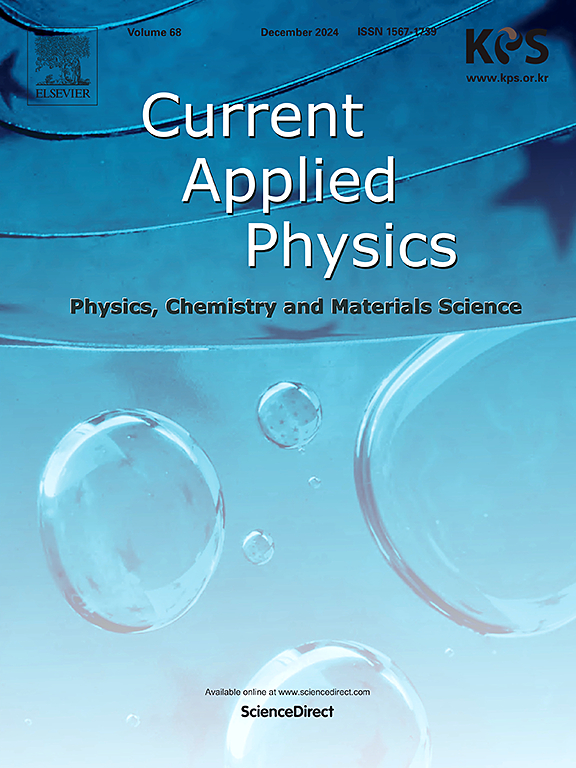Electrical characteristic depending on the doping concentration of the AlGaSb barrier in the GaSb based dual-band nBn detector
IF 3.1
4区 物理与天体物理
Q3 MATERIALS SCIENCE, MULTIDISCIPLINARY
引用次数: 0
Abstract
This paper investigates the effect of n-type doping in the Al0.35Ga0.65Sb barrier with undoped, Te:2x1015 cm−3, and Te:2x1016 cm−3 doping in the near-infrared (NIR)/short-wavelength infrared (SWIR) nBn detector through temperature-dependent dark current density and photocurrent density measurement. The dark current density at 80 K, 0.1 V were 0.003 A/cm2 (undoped), 0.005 A/cm2 (2x1015 cm−3), 0.053 A/cm2 (2x1016 cm−3). Given the negligible diffusion current and generation-recombination (G-R) current at low temperature, the increase is attributed to increased trap-assisted tunneling (TAT). In addition, the turn-on voltage of photocurrent at 300 K were 50 mV (undoped), 55 mV (2x1015 cm−3), and 70 mV (2x1016 cm−3), showing no significant increase with doping. This study indicates the importance of appropriate barrier doping concentration in designing of GaSb-based nBn detector for low-noise performance.

基于GaSb的双波段nBn探测器中AlGaSb势垒掺杂浓度的电特性
在近红外(NIR)/短波红外(SWIR) nBn探测器中,通过测量温度相关的暗电流密度和光电流密度,研究了未掺杂Te:2 × 1015 cm−3和Te:2 × 1016 cm−3的n型掺杂对Al0.35Ga0.65Sb势垒的影响。在80k、0.1 V下,暗电流密度分别为0.003 A/cm2(未掺杂)、0.005 A/cm2 (2 × 1015 cm−3)、0.053 A/cm2 (2 × 1016 cm−3)。考虑到低温下可以忽略的扩散电流和生成-复合(G-R)电流,增加的原因是陷阱辅助隧道(TAT)的增加。此外,300 K时光电流的导通电压分别为50 mV(未掺杂)、55 mV (2 × 1015 cm−3)和70 mV (2 × 1016 cm−3),掺杂后光电流的导通电压没有显著升高。该研究表明,适当的势垒掺杂浓度对于设计具有低噪声性能的gab基nBn探测器具有重要意义。
本文章由计算机程序翻译,如有差异,请以英文原文为准。
求助全文
约1分钟内获得全文
求助全文
来源期刊

Current Applied Physics
物理-材料科学:综合
CiteScore
4.80
自引率
0.00%
发文量
213
审稿时长
33 days
期刊介绍:
Current Applied Physics (Curr. Appl. Phys.) is a monthly published international journal covering all the fields of applied science investigating the physics of the advanced materials for future applications.
Other areas covered: Experimental and theoretical aspects of advanced materials and devices dealing with synthesis or structural chemistry, physical and electronic properties, photonics, engineering applications, and uniquely pertinent measurement or analytical techniques.
Current Applied Physics, published since 2001, covers physics, chemistry and materials science, including bio-materials, with their engineering aspects. It is a truly interdisciplinary journal opening a forum for scientists of all related fields, a unique point of the journal discriminating it from other worldwide and/or Pacific Rim applied physics journals.
Regular research papers, letters and review articles with contents meeting the scope of the journal will be considered for publication after peer review.
The Journal is owned by the Korean Physical Society.
 求助内容:
求助内容: 应助结果提醒方式:
应助结果提醒方式:


